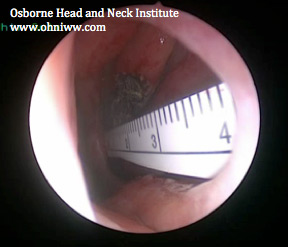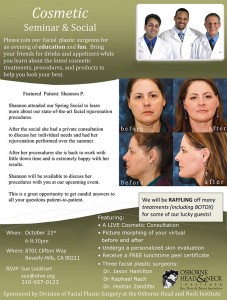- Hereditary Hemorrhagic Telangiectasia - May 25, 2016
- Hereditary Hemorrhagic Telangiectasia: Septal Perforation and Nose Bleeds - May 23, 2016
- Hereditary Hemorrhagic Telangiectasia: Epistaxis and Septal Perforation - May 18, 2016
- Wegener’s Granulomatosis: Autoimmune Disease and Multi-Focal Septal Perforation - May 9, 2016
- Kyle Korver: Facial Injury and Nasal Fracture - March 24, 2015
- Russell Westbrook: Facial Injury and Surgery - March 5, 2015
- Mega-perforation: Pushing the Limits of Septal Perforation Repair - November 26, 2014
- Septoplasty Complication and Septal Perforation - November 24, 2014
- Nose Picking (Rhinotillexis) and Septal Perforations: Why I should stop picking my nose…? - November 24, 2014
- Nasal Fractures, Septal Hematoma, and Septal Perforation: Simultaneous Rhinoplasty and Septal Perforation Repair - October 1, 2014

BACKGROUND
Nose picking is one of the leading causes of epistaxis (nose bleeds) and a common cause of septal perforations (a hole in the nasal septum). Nose picking (rhinotillexis) is defined as the insertion of the finger and/or object into the nose for the purpose of removing nasal secretions, mucus, crusts and so forth.
PATHOLOGIC DIAGNOSIS
A study by the Journal of Clinical Psychiatry, querying 1000 subjects, returning 254 responses, found that ninety-one percent of respondents were nose pickers. The simple translation, most adults “pick” their nose at some point. So when does this become a problem? Typically, nose picking doesn’t become a serious clinical problem until it becomes an impulse control problem, known as body-focused repetitive behavior (BFRB) or an obsessive-compulsive disorder, known as rhinotillexomania. In both conditions the patient can cause damage to the nose through their repetitive compulsive behavior.
CLINICAL CONSIDERATIONS
Many patients presenting with septal perforations admit to chronically picking their noses. These patients generally fall into two groups. In the first, we have patients that began picking their noses after a perforation had already developed due to septoplasty, rhinoplasty, cocaine use, decongestant abuse, or trauma. These patients are generally obsessed with cleaning their nose and alleviating the sensation of crusting or itching. The second group is comprised of patients who generally suffer from rhinotillexomania and their septal perforation is self-inflicted. In both cases rhinotillexis can introduce bacteria to the nasal cavity causing infections and subsequent increase in septal perforation size. Successful treatment in patients with impulsive rhinotillexis involves managing not only the surgical disease (septal perforation) but also the associated compulsive behavior. In severe cases, co-management with a clinical psychologist/psychiatrist may be advised.

SURGEON
Dr. Jason Hamilton is the Director of Plastic and Reconstructive Surgery for the Osborne Head and Neck Institute, and is double board certified by the American Board of Facial Plastic and Reconstructive Surgery and the American Board of Otolaryngology/Head and Neck Surgery. Dr. Hamilton is one of only handful of septal perforation specialist worldwide and has one of the highest success rates.
For more information on the deviated septum, septoplasty, functional rhinoplasty and septal perforation repair by Dr. Jason Hamilton, septal perforation specialist, please contact the Osborne Head and Neck Institute or visit
www.perforatedseptum.com.
Image Credit: Carlos Paes (http://www.sxc.hu/photos/103019), via Wikimedia Commons

 Download this article PDF
Download this article PDF

